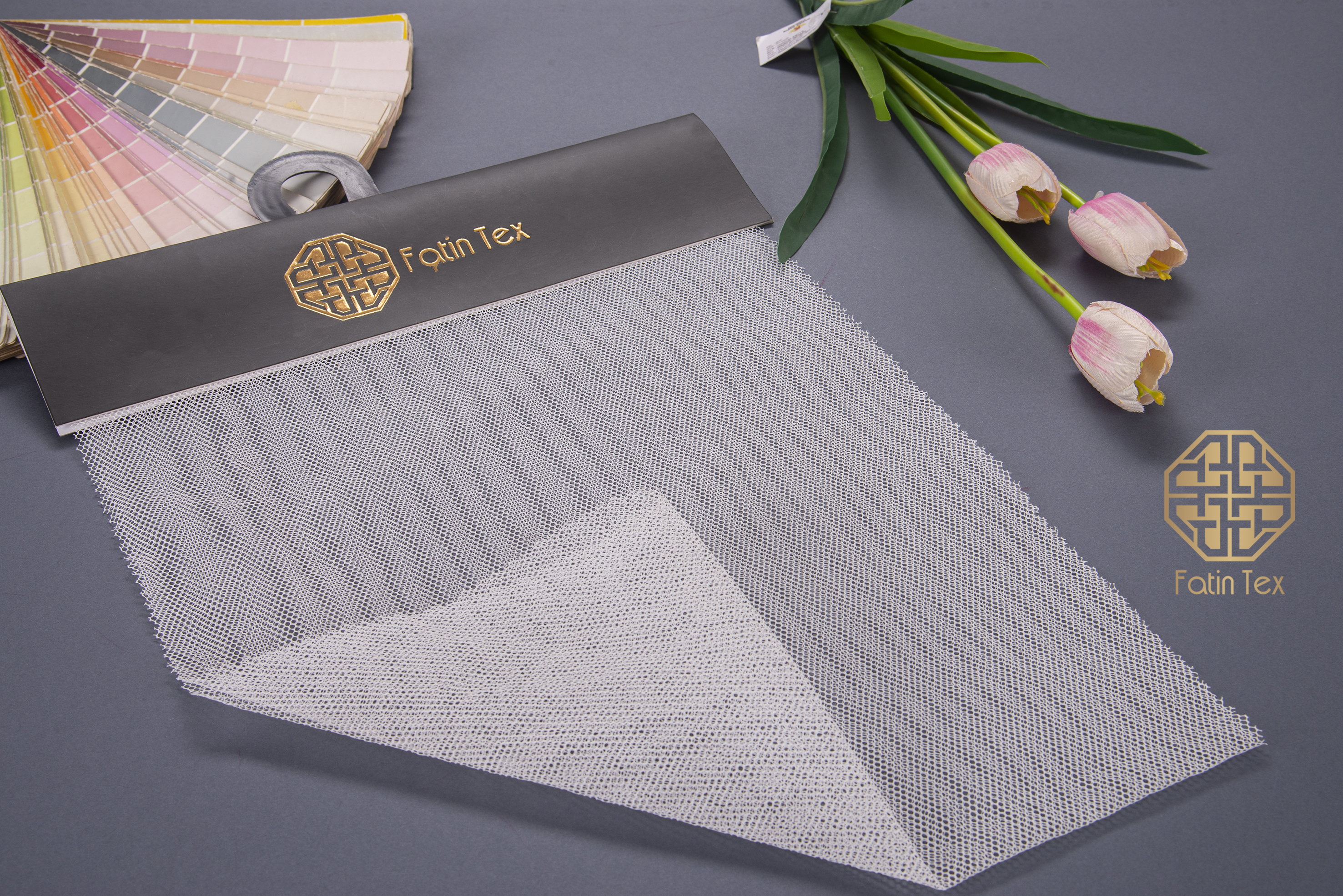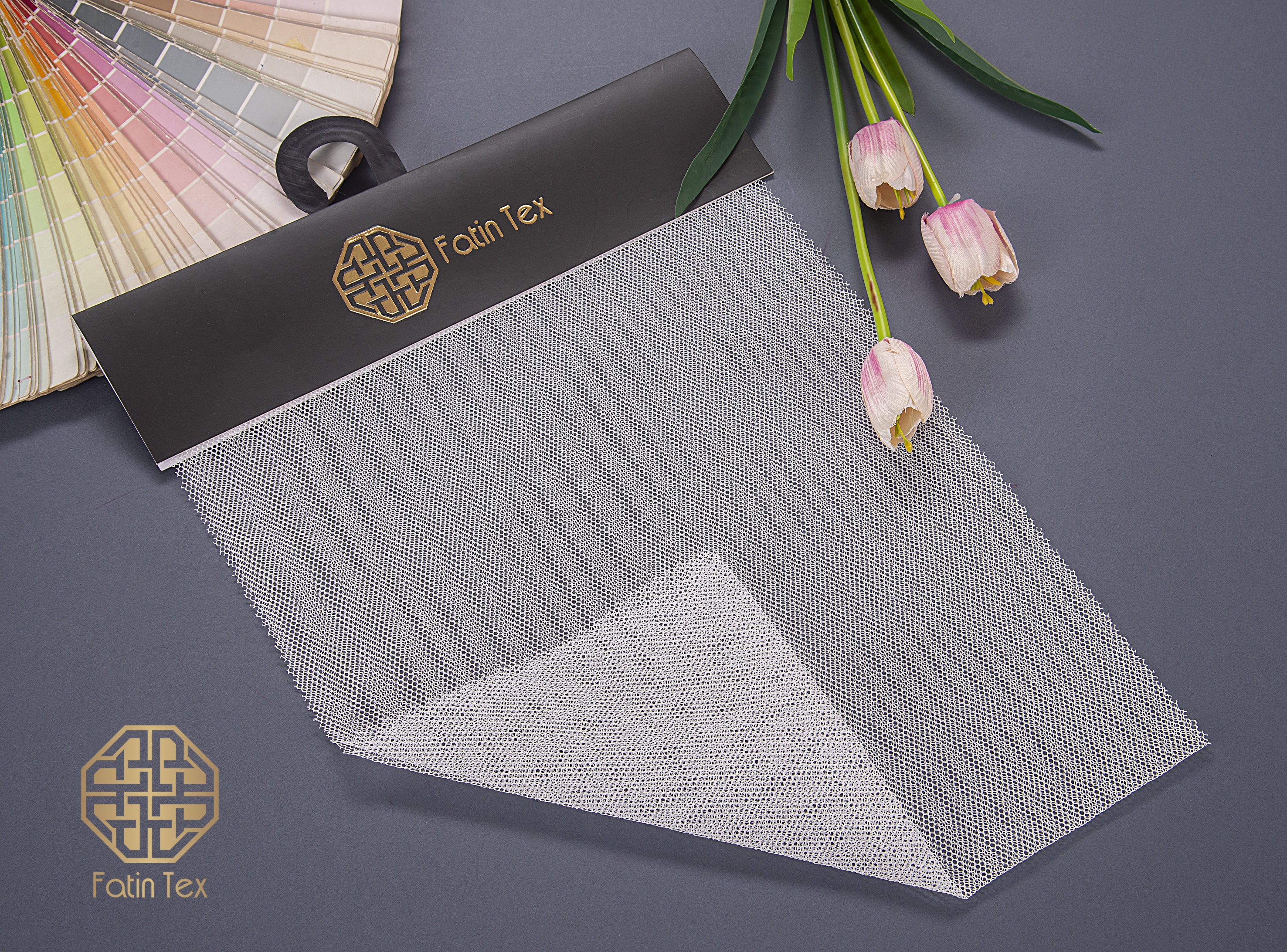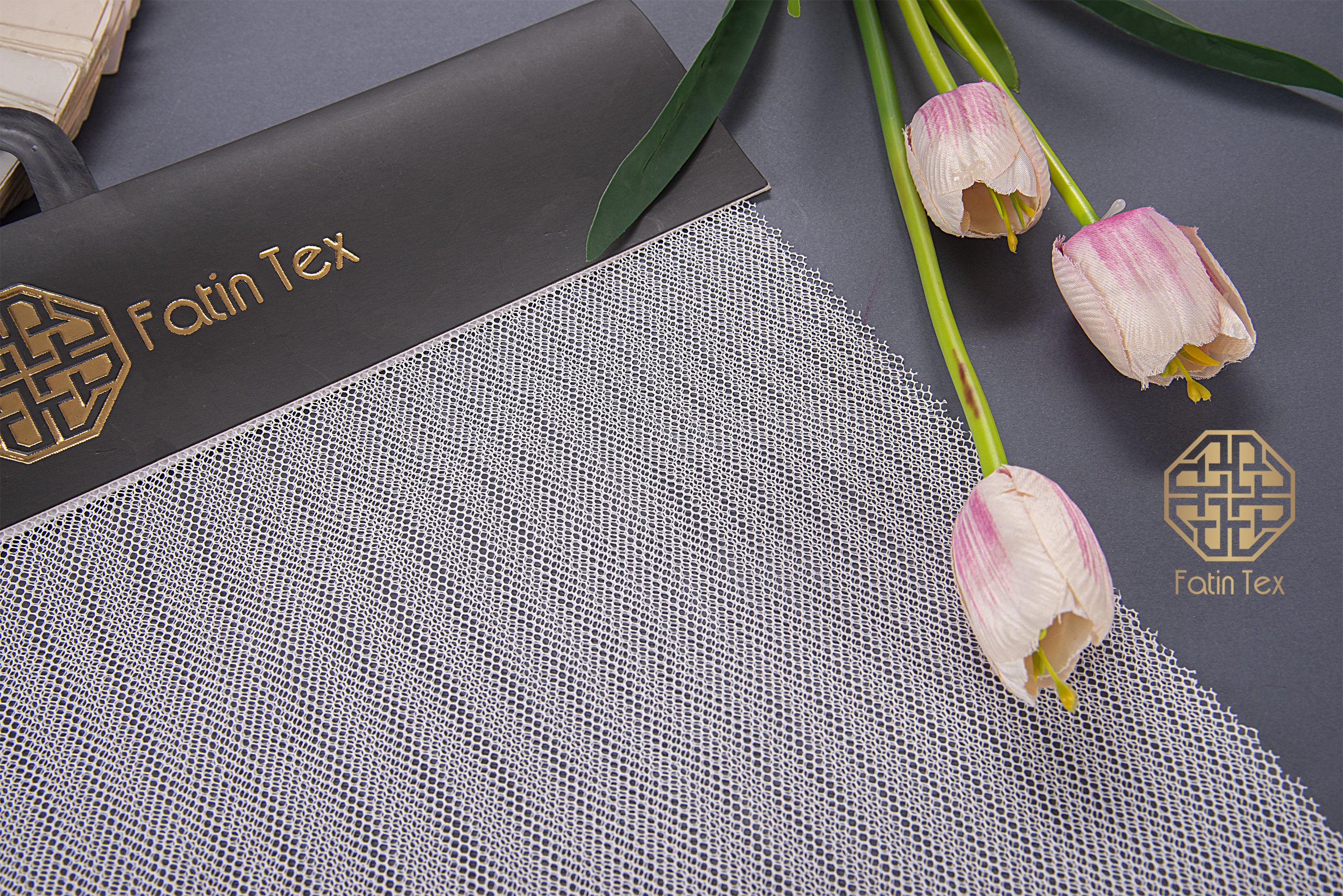Mesh fabric—often referred to commercially as mesh—is technically defined as an engineered barrier material made of interlaced yarns. These yarns are formed through precise knitting or weaving techniques to create an open, controlled-porosity network structure.
The concept dates back to 1888, when British mill owner Lewis Haslam developed the idea of a clean, breathable fabric that could withstand temperature changes after noticing his relative’s hole‑punched gloves still retained warmth.
In today’s market, mesh fabric in Egypt has evolved from a simple material into a high‑performance textile solution. Its strategic importance lies in serving diverse sectors—from high fashion and advanced sportswear that demand ventilation and moisture management, to critical industrial applications such as precision filtration systems and occupational safety equipment.
In this context, Fateen Tex—one of Egypt’s Garment fabric manufacturers—stands out as a pioneer in mesh production. With strong capacity and technical expertise, Fateen Tex meets growing regional demand for specialized, high‑quality mesh fabrics through a robust wholesale model across multiple B2B sectors.
Molecular Composition and Raw Materials
The final properties of mesh fabric are determined by its molecular composition and the raw materials used. Selecting the right polymer is the first and most important engineering step, setting the foundation for performance and durability.
Core Synthetic Fibers
-
Polyester: The primary material for mesh fabric in Egypt. It offers exceptional durability, high resistance to wrinkles, stains, and UV exposure. Its hydrophobic nature enables quick drying and easier dyeing, making it ideal for sports apparel, outdoor gear, and many industrial uses.
-
Nylon: The premium choice for applications requiring superior strength, flexibility, and a softer hand. Although inherently more hydrophilic, finishing can improve performance. Variants include Nylon 6 and Nylon 6,6; the latter is used in high‑stress applications such as airbags due to its outstanding strength.
-
Elastane/Spandex: Not a base fiber but a critical additive. A small proportion—typically 5% to 18%—can transform standard mesh into high‑performance stretch fabric (power mesh), essential for compressionwear, shapewear, and athletic garments that demand full freedom of movement.
Blends and Other Industrial Materials
Beyond core fibers, Fateen Tex also works with polypropylene for specific industrial applications requiring high chemical resistance. The company can engineer custom blends—such as poly‑cotton—to deliver tuned comfort‑durability trade‑offs.
Advanced Manufacturing at Fateen Tex
Producing mesh fabric is a tightly controlled, multi‑stage engineering process designed to ensure top‑tier quality and consistency.
Fiber Formation (Polymerization and Extrusion)
Manufacturing begins at the chemical level. Monomers derived from refined petroleum (polyamide for nylon, ethylene for polyester) undergo polymerization, reacting with acids or alcohols to form solid polymers.
The polymer is then melted and extruded through a precision spinneret to create continuous filaments. Fateen Tex sources high‑grade polymer yarns from trusted suppliers to guarantee a strong foundation for the final product.
Fabric Formation (Knitting vs. Weaving)
The choice between knitting and weaving is a critical control point that defines core mechanical behavior—elasticity versus dimensional stability—based directly on end use.
-
Knitting: The most common method for apparel mesh in Egypt. Specialized needles interloop polymer yarns to create a flexible, open structure with interlocking loops. Ideal for naturally elastic meshes used in sportswear that must move with the body.
-
Weaving: Produces a more stable, rigid mesh. Warp (lengthwise) and weft (crosswise) yarns interlace to form a net‑like structure. Woven mesh is less elastic but offers superior dimensional stability and tensile strength—ideal for industrial filtration screens, reinforcement materials, and heavy‑duty bags.
Finishing Processes
After the base mesh is formed, Fateen Tex applies value‑adding finishes:
- Dyeing and Printing: Often solution‑dyed yarns or pre‑dyed fibers to ensure deep, long‑lasting color and colorfastness.
- Functional Finishes: Optional treatments for water repellency, antimicrobial performance, flame resistance, or enhanced UV protection.
Technical Types and Classifications of Mesh Fabric
Fateen Tex manufactures a wide spectrum of mesh products, each engineered for a target market. The following taxonomy by structure and use helps wholesale buyers select efficiently.
-
Power Mesh: High‑compression knit, typically nylon or polyester blended with a higher ratio of spandex. Known for exceptional four‑way stretch, support, and shaping. Used in compression sportswear, shapewear, and functional linings.
-
Tulle Mesh: Fine, lightweight mesh with a characteristic hexagonal aperture. Primarily decorative in apparel—bridal veils, costumes, sheer top layers in dresses.
-
Air Mesh: Three‑dimensional knit with multilayer architecture creating an air pocket for superior ventilation and cushioning. Common in footwear, backpack panels, and automotive/office seating.
-
Heavy‑Duty Industrial Mesh: Often woven polyester or polypropylene with high denier and specified mesh count. Used for filtration, structural reinforcement, safety vests, and agricultural netting.
-
Standard Sportswear Mesh: Classic 100% polyester with moisture‑wicking and high breathability. Widely used in jerseys, shorts, and garment linings.
Quick Reference Table
Physical and Mechanical Performance Metrics
Fateen Tex goes beyond descriptive traits to measurable specifications—critical for B2B buyers who rely on exact standards.
- Breathability and Air Permeability: Core advantage of mesh. The open structure enables highly efficient airflow.
- Durability, Tensile and Tear Strength: Despite low weight, high‑quality mesh—especially polyester or nylon—delivers excellent strength and longevity, essential in mechanically demanding industrial uses and for long garment lifecycles.
- Moisture Management and Drying Speed: Key in sportswear; the fabric wicks sweat away from skin to the outer surface to evaporate quickly.
- Flexibility and Elongation: Ensures mobility and comfort in apparel. Achieved via knit structures and elastane additions that enable stretch‑and‑recovery.
Wide‑Ranging Applications: A Platform Textile
Mesh is a platform technology—one manufacturing capability at Fateen Tex can serve multiple industries, enabling economic flexibility and cross‑sector innovation.
Apparel and Fashion
- Sportswear: Mesh is used in jerseys, shorts, and leggings, where breathability and moisture management shine.
- Swimwear: For linings and outer layers, leveraging polyester’s quick‑dry properties.
- Contemporary Fashion: As sheer overlays for dresses and skirts, and in innovative designs that require lightness and transparency.
- Intimates: Fine meshes like tulle or power mesh serve both aesthetic and functional roles in lingerie.
Industrial and Technical
- Filtration: For air, gas, and liquid filters where precise aperture size is critical.
- Specialized Bags: Heavy‑duty laundry bags, agricultural produce sacks, and industrial carriers.
- Occupational Safety: High‑visibility safety vests where ventilation is important for worker comfort in hot environments.
- Agriculture: Protective crop netting against insects and birds, and shading fabrics to limit direct sun.
Furniture and Equipment
- Office Furniture: The mesh office chair is a signature application valued for supportive comfort and excellent ventilation.
- Luggage and Bags: Pocket linings and exterior panels in travel and backpack products.
- Medical and Military: Used in specialized applications such as surgical meshes (e.g., hernia repair), support slings, and tactical gear components that require durability and low weight.
Care Guidelines and Wholesale Storage
These best practices are tailored for Fateen Tex’s manufacturing and industrial clients handling full rolls before and during production.
- Washing & Pre‑Production: Lab‑test swatches before scaling up. Although durable, wash under 40°C to preserve special finishes. Avoid harsh chemicals or chlorine bleach that can degrade synthetic fibers.
- Handling & Cutting: Fine industrial meshes can accumulate static and attract particulates. Use proper spreading and cutting techniques to prevent tearing or distorting the mesh structure.
- Storage: Store rolls horizontally on racks to prevent pressure marks and creasing. Keep in clean, dry environments away from direct sunlight to avoid UV‑driven color and fiber degradation—especially for non‑UV‑stabilized fabrics.
Conclusion: Partner with Fateen Tex for Engineered Mesh Solutions
When you choose Fateen Tex, a leading fabric manufacturer in Egypt, you’re not merely buying mesh—you’re investing in integrated textile solutions backed by expertise, quality, and innovation. You’re selecting a partner who understands your industrial and commercial challenges and is committed to your success.
Ready to elevate your products’ performance and quality? Our expert team is prepared to provide technical consultations, supply samples, and design wholesale programs tailored to your needs. Contact us today to start a strategic partnership that delivers market‑leading results.




.jpg)
.jpg)
.jpg)

